Surtsey is a small island, south of Iceland in the Vestmannaeyjar, the Westman Islands,
that came into being during a volcanic eruption several decades ago, and it is a place that I have been fascinated with for essentially my entire life. In fact, the island and I are almost exactly the same age. Technically, Surtsey was born
about eight weeks before I was, but I also existed at the time Surtsey rose from the sea, I just hadn't erupted
quite yet. I also remember watching movies about the creation of the island, and also of the eruption ten years later on the nearby island of Heimaey, in the Vestmannaeyjar, when I was in the fifth grade in elementary school. Consequently, I was very motivated to make an actual visit to this difficult-to-reach WHS.
That was always going to be a challenge, since, in order to preserve the island as a living laboratory for the study of how life colonizes new land, it is forbidden to actually walk on its surface, or even land a boat on its shoreline. That leaves only the possibility of viewing the island from a boat just offshore, or from a sightseeing flight in a small aircraft. However, while there are one or two tour companies on Heimaey that still list a trip to Surtsey among their offerings, in practical terms they are out of reach due to the high costs involved, and, in fact, they told me that almost no one ever inquires about a visit to Surtsey. I did not want to give up so soon, and I continued to ask around the harbor on Heimaey, since wherever there is port, there is almost always someone with a boat who would be willing to take you somewhere, for the right price. Eventually, I spoke to someone, who knew someone, who knew someone who had a boat that might be willing to take me. (www.saca.is) The cost of a trip for just one person was not quite the right price from my point of view, but in this case, I was determined to go, so I bit the bullet and booked the tour. I may have to compensate for that by skipping some other intended destination of the Tour somewhere down the line, but I will worry about that later. The only remaining concern was whether the weather the next day would allow us to proceed to the island in a mid-sized rib boat, which involved a voyage of about 20 kilometers over the open ocean.
The next day, I was extremely pleased to learn that the conditions were favorable, a situation that may not have existed just days before, nor in the days after. So we set out at 9:00 AM, with about an hour required to get to Surtsey. As we left the vicinity of Heimaey, and moved out over deeper water, I enjoyed the large numbers of pelagic birds that were all around us. All of them were species I had already seen, but I was able to finally get a few decent photos of Northern Gannets, which I had previously failed to do. Before long, Surtsey came into view, and I was somewhat surprised at how large it appeared to be.
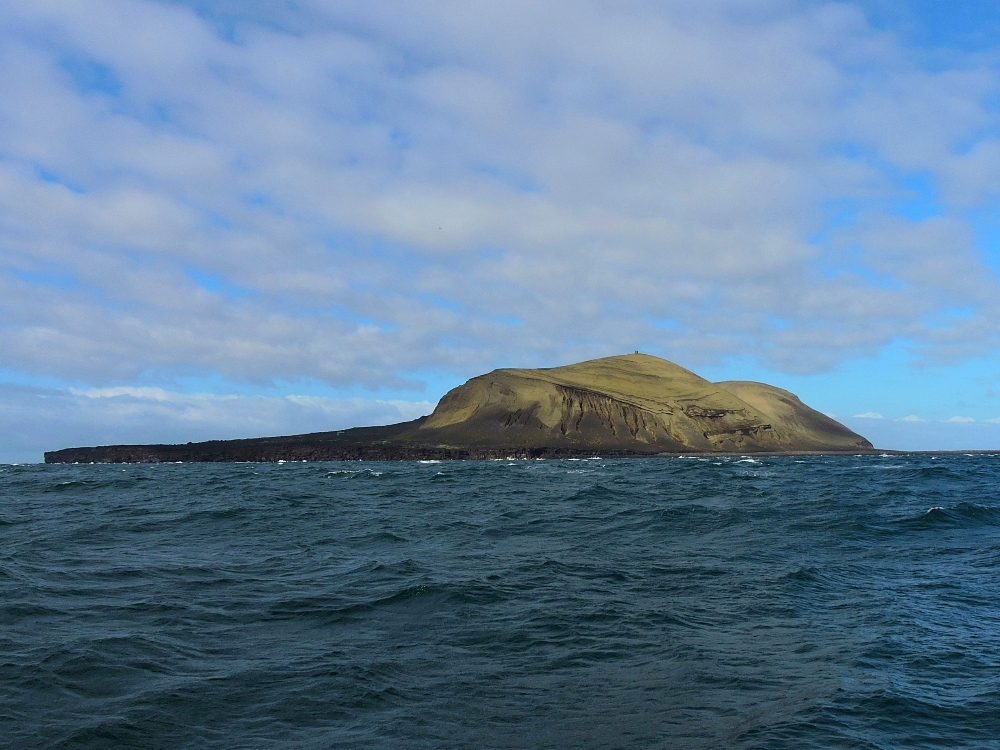
Today, the island, which did not exist at all before 1963, has about 1.3 square kilometers of land above the surface of the sea, with two taller peaks towards the northern side of the island, the first parts of the island we were able to see. At the shoreline on that side of the island, beneath those peaks, lies a low field of lava rocks that slopes down into the water. That side of the island is the part that has experienced the most erosion, both from wave action on the lava rocks, and also by the wind, which I saw creating swirling clouds of dust on the slopes of the two large peaks.
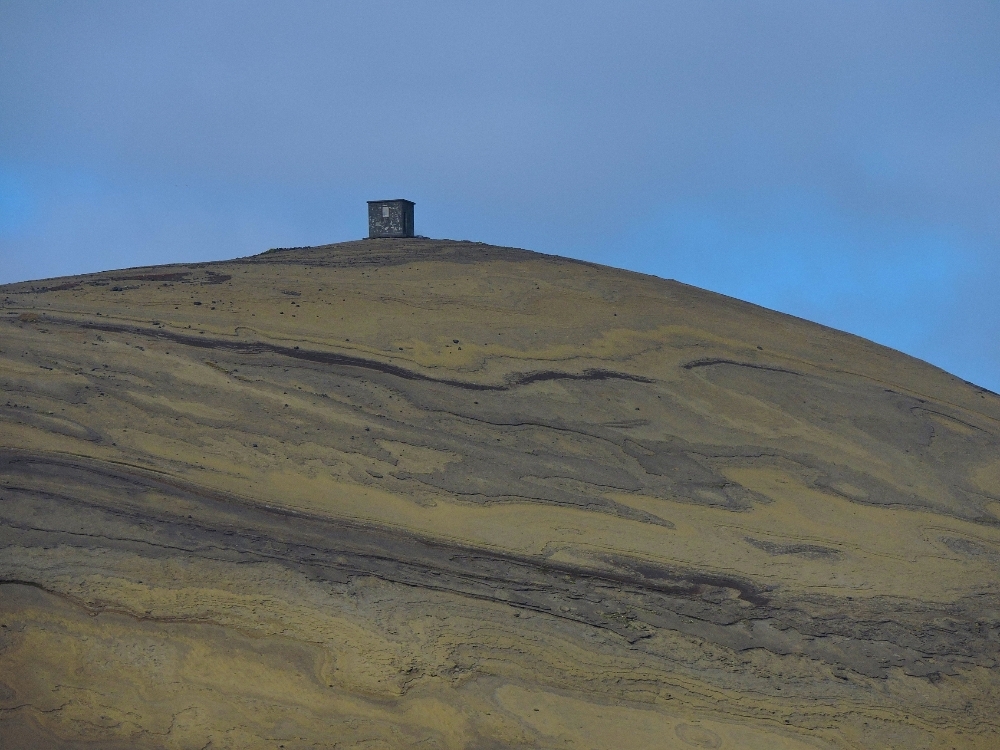
Moving around the island in a clockwise direction, one next sees the area where plant life has slowly begun to colonize the island, and now clings tenuously to its rough surface. Birds have also begun to move in to that area, mostly gulls and fulmars, and I think they use the island more as a roosting place and not so much for nesting at this time. Also in view from there, is the remaining cinder cone around the main volcanic vent that had created the island in the first place. I found it interesting that this seemed relatively small in comparison to the other features of the island.
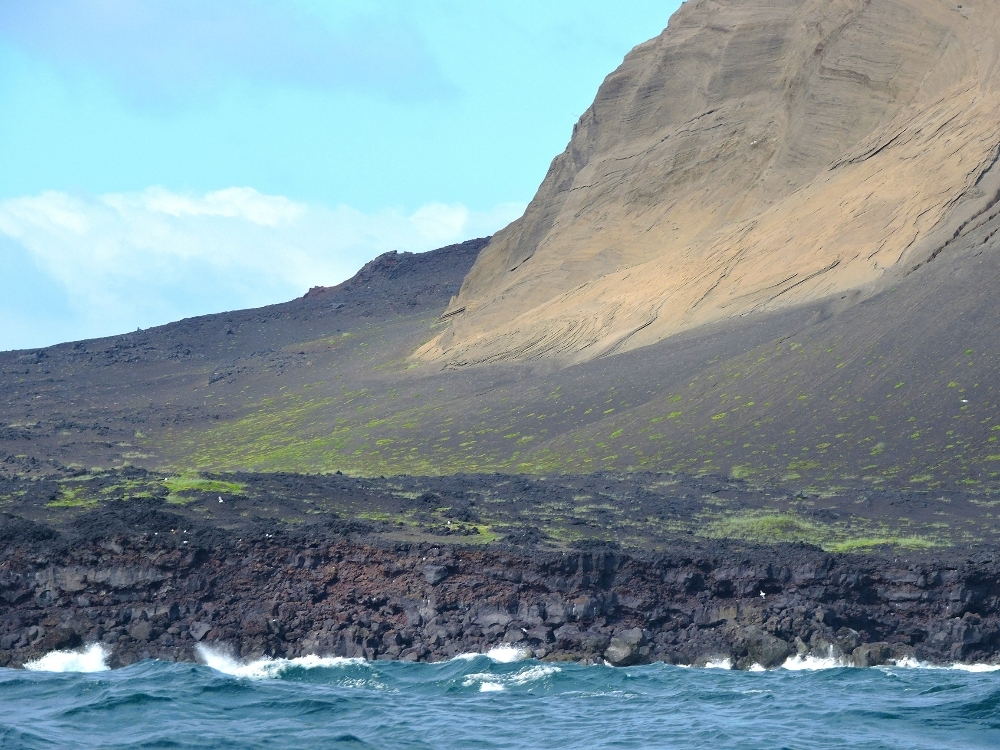
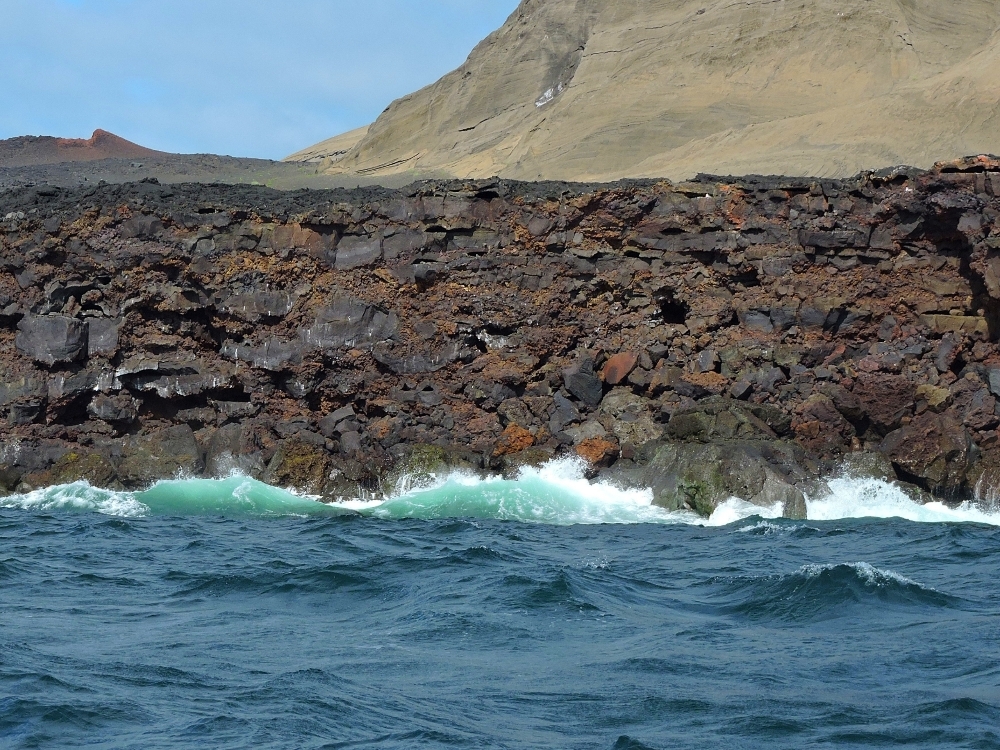
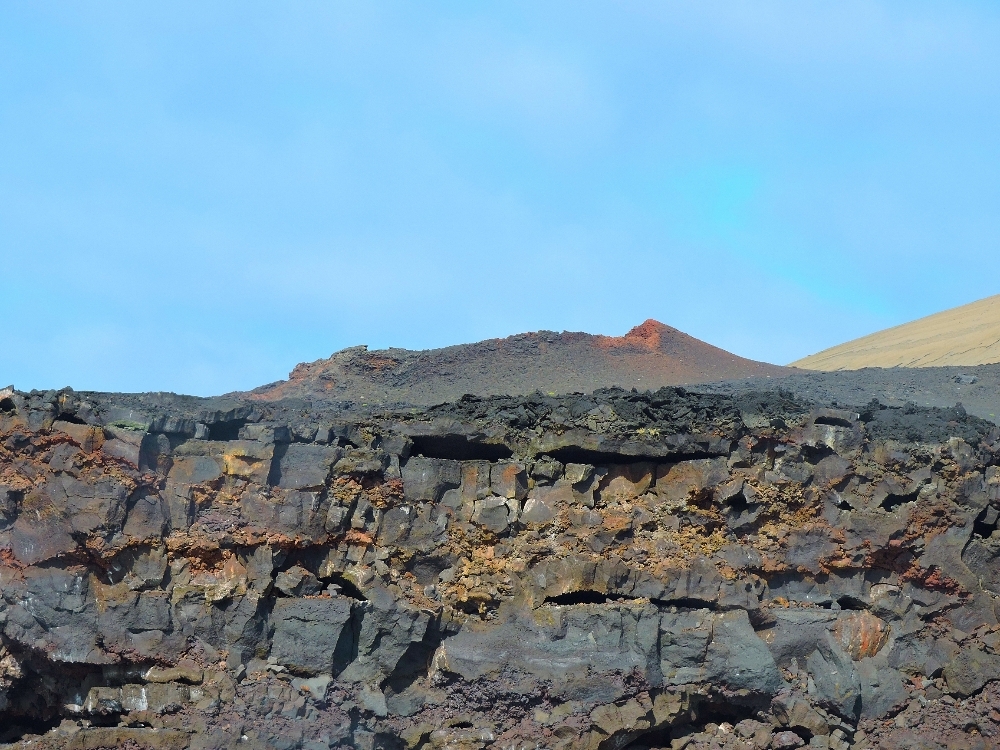
The south and west sides of the island were the leeward sides on that day, and that allowed us to approach the shoreline there to a surprisingly close distance. On that side, the formerly loose tephra lava residues had previously consolidated into palagonite, and the shoreline now consists of sheer cliffs, with a height of 60 to 100 meters. In a few places, one can see where the last throws of the eruption had deposited several layers of ash above that already-consolidated surface, which I found to be a rather beautiful effect. Some people have previously wondered whether Surtsey would soon be eroded, and vanish into the sea once again, but after seeing that side of the island, it is apparent that at least some of it will be around for a long, long time to come. Of course, there is always the possibility that another eruption will occur from the same vent in the future, thereby adding new land to that still-young island.
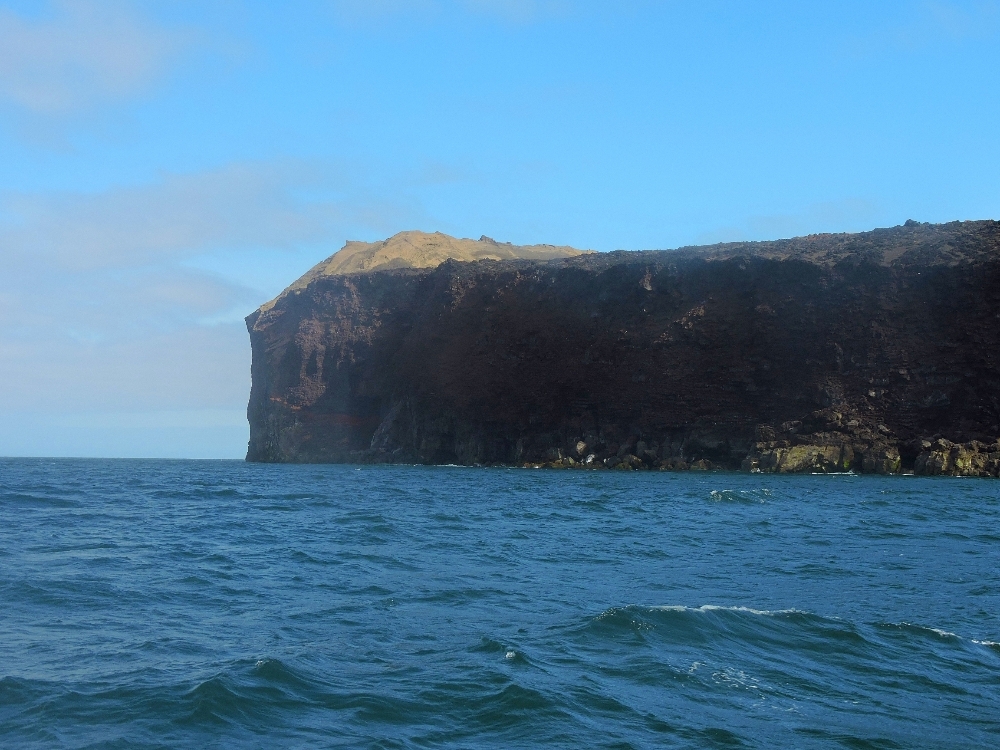
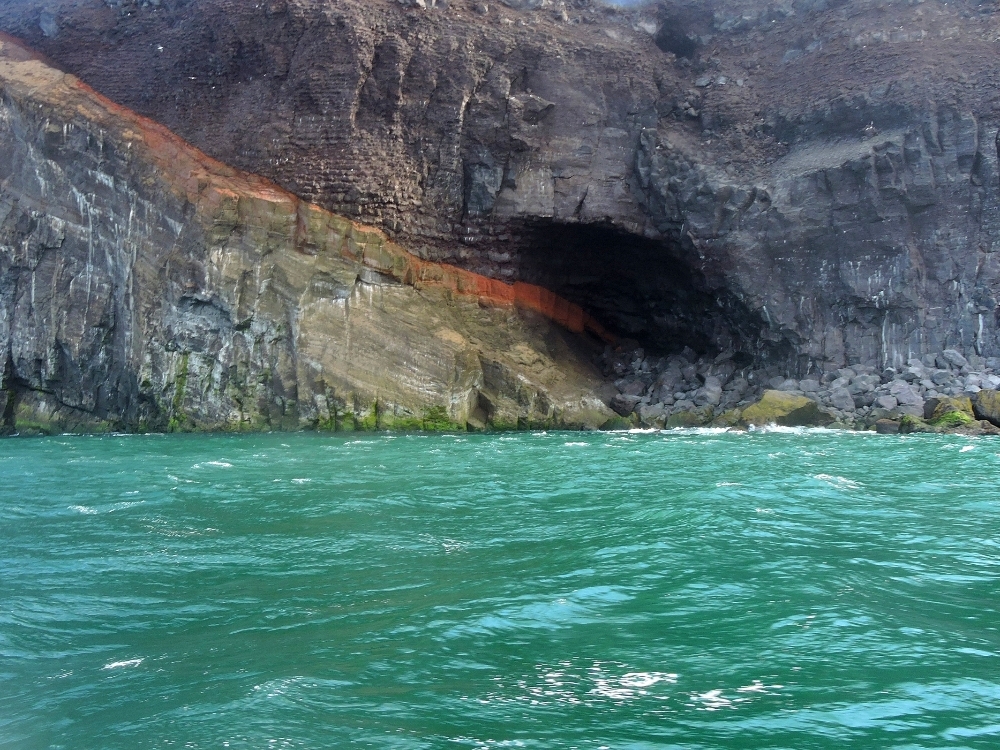
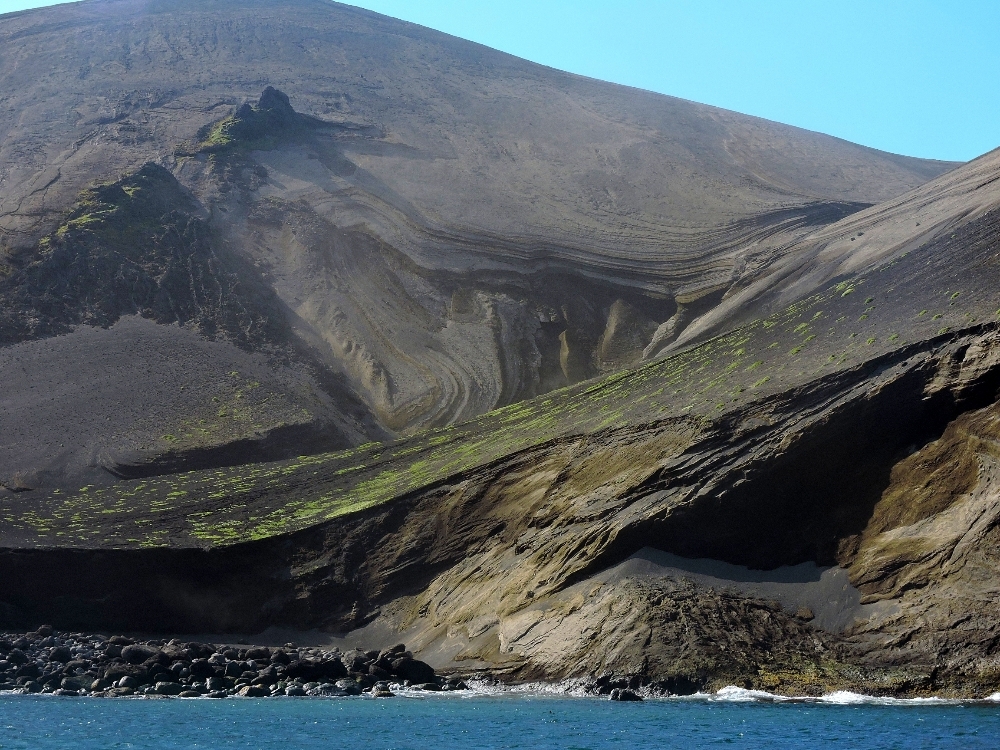
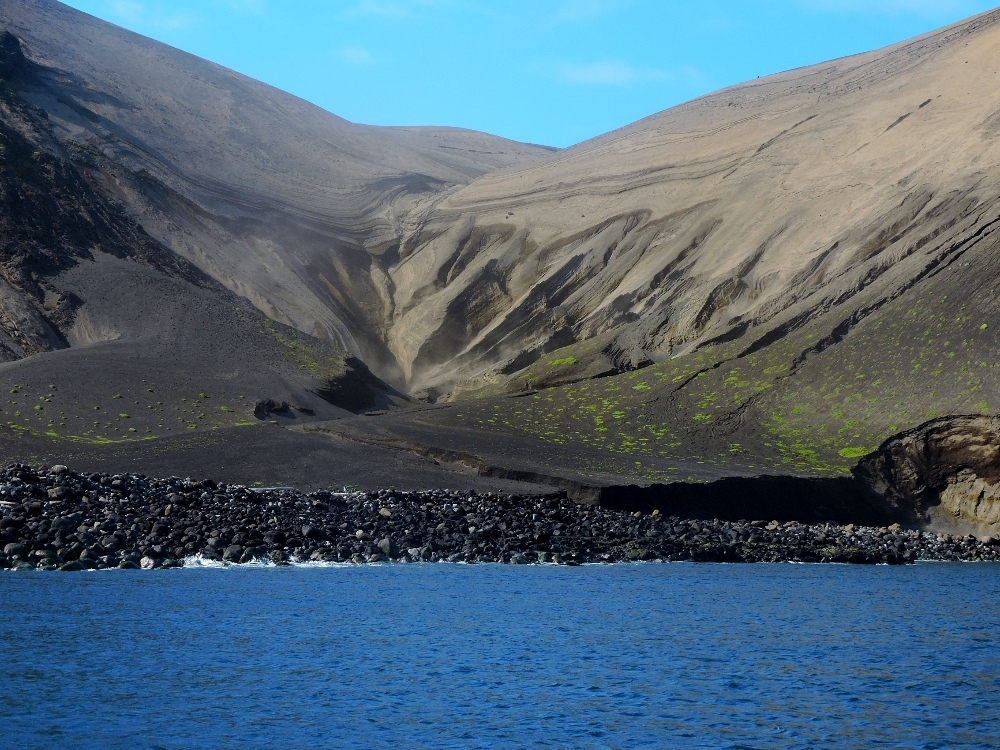
Surtsey is now one of my favorite WHSs out of those I have visited so far, in part due the personal connection I feel with it, the fact that so few people have actually seen it, and simply by its many fascinating qualities. While it strained my resources to make the visit, I am very glad that I was able to manage it.